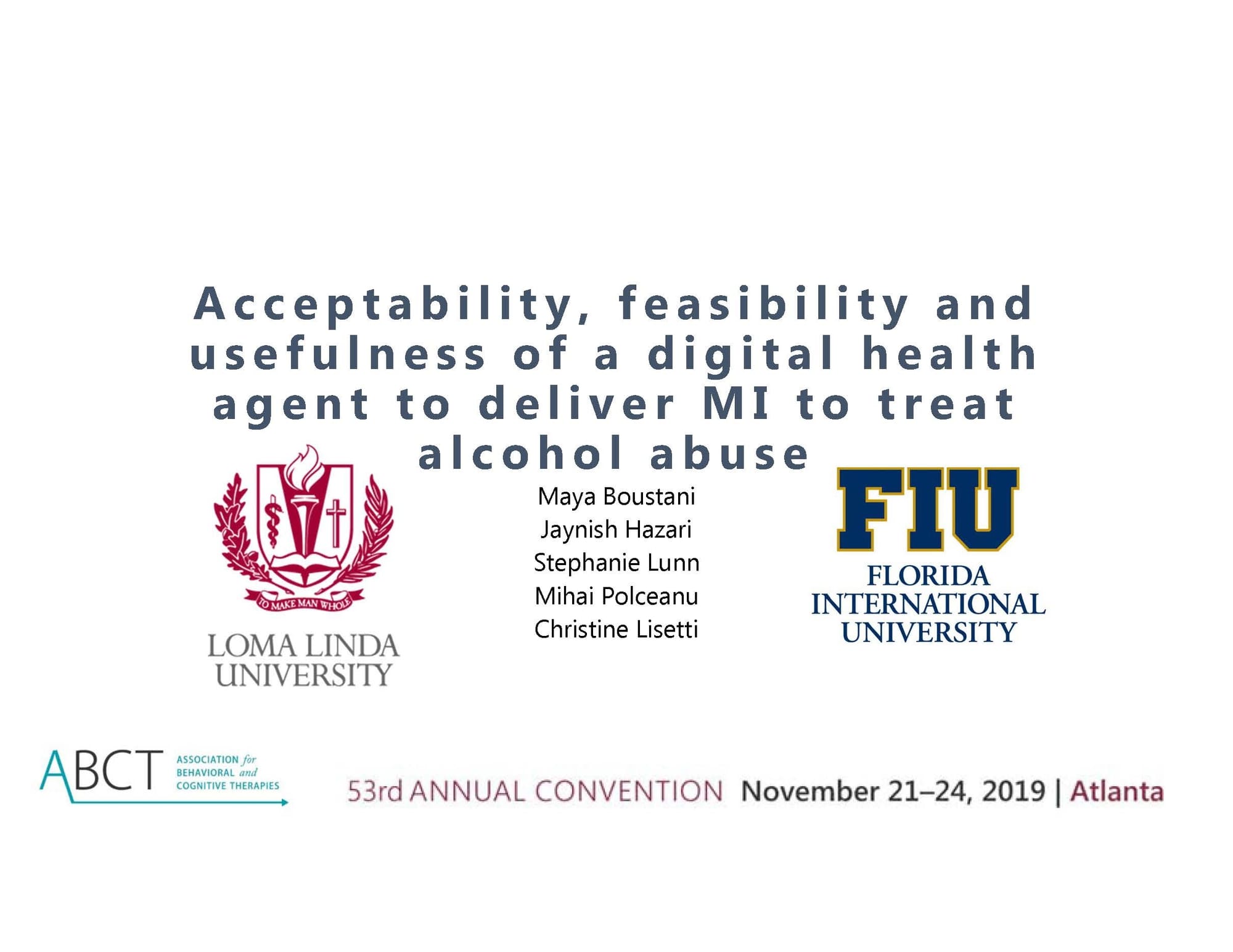Acceptability, feasibility, and usefulness of using a digital health agent to deliver MI to treat alcohol abuse: Clinician perspectives

BACKGROUND: This study examines clinical trainees’ attitudes towards an online virtual health agent, called "EEVA" (empathic embodied virtual agent), that is used to deliver web-based Motivational Interviewing (MI) for alcohol abuse. Specifically, this project investigates human interaction with EEVA to determine the acceptability and feasibility, and usefulness of using such a technology in situations where humans expect empathic communication, such as healthcare. Research suggests that virtual agents (3D avatars who communicate with language, facial expressions and gestures) increase user engagement during interactions with computer systems. Findings also show that behavior-change interventions using MI help people find personal motivation to change addictions, such as alcoholism.
METHODS: A total of 15 doctoral-level clinical psychology trainees with knowledge of MI provided feedback regarding the attributes of EEVA; specifically the perceived acceptability, feasibility, and usefulness of the intervention. An audio recorder captured participants comments, as they were instructed to "think aloud" as they used the technology. Participants completed a post-intervention questionnaire based on a combination of O’Brien’s 6-attribute model, Heerink’s model and Bartneck's ‘Godspeed questionnaire’ to determine the acceptability, feasibility, and usefulness of EEVA. We will analyze qualitative data from the "think aloud" exercise using an inductive method to identify emergent themes in participants’ reactions to the technology. Quantitative data from the questionnaire will be analyzed using descriptive statistics and frequency counts to explore participants’ impressions of the technology.
RESULTS: Participants reported mixed attitudes towards the technology and positive perceived utility of using it for a clinical population.
CONCLUSION: Web-based interventions are cost-effective, highly accessible, and less stigmatizing than traditional therapy. Next steps will include testing the feasibility, acceptability, and preliminary effectiveness of using this technology with individuals experiencing alcohol abuse.



